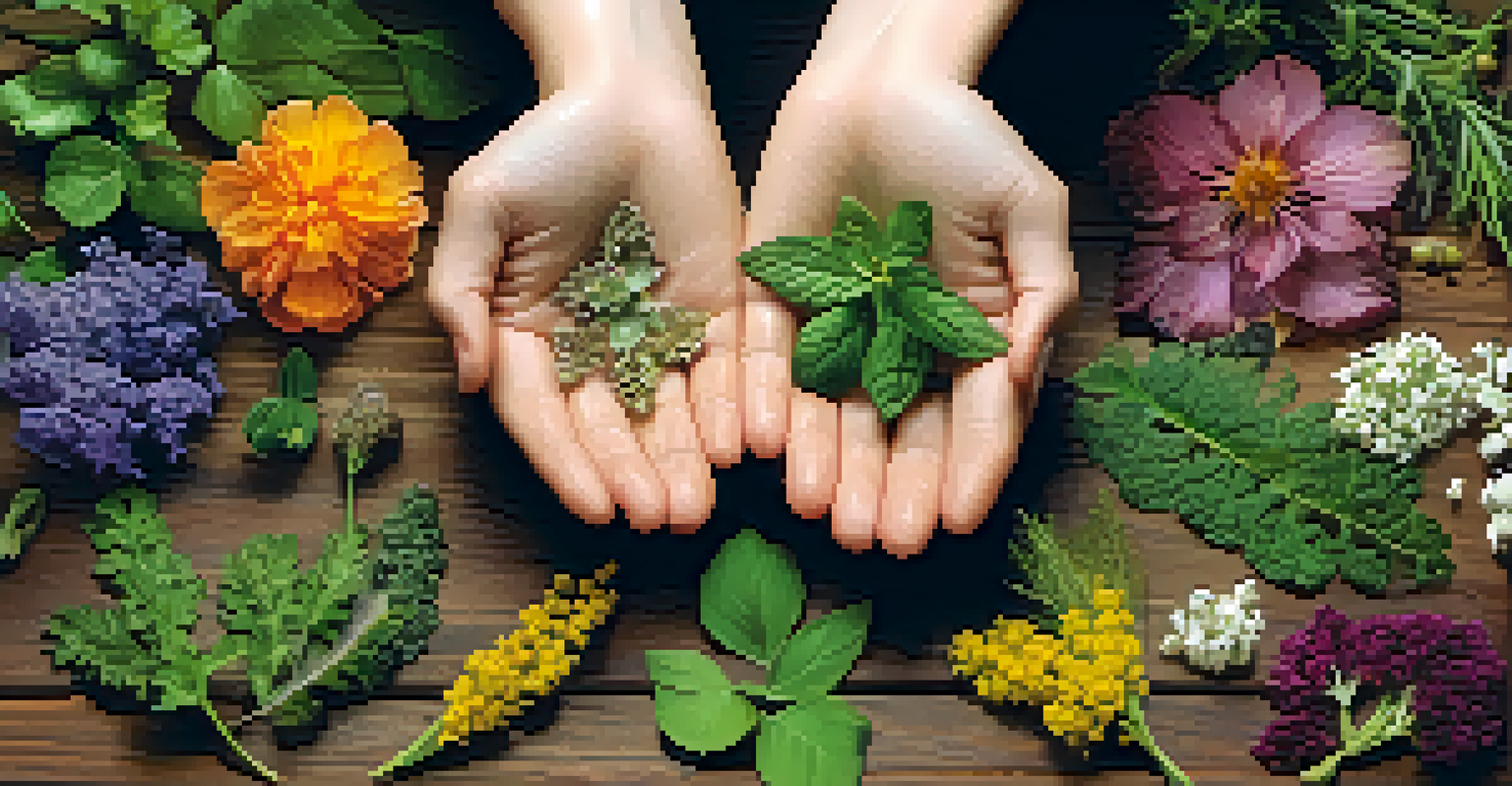The Impact of Gender on Entheogen Legislation

Understanding Entheogens and Their Cultural Significance
Entheogens are substances that can induce altered states of consciousness, often used in spiritual or religious contexts. They have been a part of human culture for thousands of years, serving as tools for healing, self-discovery, and communal bonding. As society evolves, the legal landscape surrounding these substances has also shifted dramatically, influenced by various factors including gender dynamics.
The use of entheogens is not just about the substances themselves, but about the stories, the healing, and the empowerment they can offer to marginalized voices.
Historically, many cultures have associated the use of entheogens with femininity, linking women to nature and healing practices. This connection often places women in roles as caretakers or spiritual leaders within their communities. However, the modern legal framework surrounding these substances can reflect patriarchal biases, impacting how different genders engage with entheogens.
Understanding the cultural significance of entheogens is crucial for recognizing the broader implications of their legislation. As we explore the intersection of gender and entheogen laws, we can begin to see how these substances are not merely regulated but are also emblematic of deeper societal values and conflicts.
Historical Perspectives on Gender and Drug Laws
To grasp the current state of entheogen legislation, it’s essential to look back at historical drug laws and their gendered implications. Many early drug regulations were influenced by societal fears surrounding women and their use of substances, often painting them as dangerous figures. This stigma has perpetuated a cycle of gender bias in drug legislation, impacting how different genders access and use entheogens.

For example, during the 20th century, laws targeting psychedelics often disproportionately affected women, particularly those involved in countercultural movements. This reflected broader societal attitudes that sought to control female autonomy. By criminalizing these substances, the state not only targeted the use of entheogens but also reinforced traditional gender roles.
Gender Bias in Entheogen Laws
Historical and modern drug laws often reflect gender biases that disproportionately affect women's access to entheogens.
Examining these historical contexts reveals how gender has shaped drug laws over time. As society moves toward more inclusive approaches to entheogens, it's crucial to acknowledge these past injustices to create equitable legislation for all genders.
Current Gender Disparities in Entheogen Access
In today's world, access to entheogens remains uneven across different genders. Research indicates that women often face barriers in accessing these substances, whether through legal channels or within community settings. This disparity can be attributed to a range of factors, including societal perceptions, economic status, and legal restrictions that disproportionately impact women.
We must recognize that the regulation of substances has always been deeply intertwined with societal values, particularly around gender and race.
Moreover, women seeking to use entheogens for therapeutic purposes, such as healing from trauma or enhancing mental health, may encounter skepticism or lack of support. This can lead to feelings of isolation and hinder their ability to engage with these substances safely and meaningfully. The stigma surrounding women's drug use further complicates this issue, reinforcing barriers that prevent equitable access.
Addressing these disparities is vital for creating a more just framework around entheogen use. As the conversation around psychedelics evolves, advocating for women's rights and access to these substances can foster a more inclusive and supportive environment.
Women in Psychedelic Advocacy and Legislation
Women have played a pivotal role in advocating for the decriminalization and regulation of entheogens. Many female leaders within the psychedelic community are challenging traditional narratives and working toward more inclusive policies. Their voices are crucial in shaping a legal landscape that considers the unique needs and perspectives of all genders.
Organizations led by women are at the forefront of this movement, focusing on education, research, and destigmatization of entheogen use. They highlight the importance of creating safe spaces for women to explore these substances, both for personal growth and community healing. By amplifying women's experiences, these advocates challenge the historical biases that have shaped drug legislation.
Intersection of Gender and Race
Women of color face compounded challenges in entheogen legislation, highlighting the need for an intersectional approach to advocacy.
The work of women in this field is not just about changing laws; it's about transforming societal perceptions of entheogens. As more women step into leadership roles, they bring diverse perspectives that can lead to more comprehensive and equitable approaches to entheogen regulation.
The Intersection of Gender, Race, and Entheogen Laws
Gender disparities in entheogen legislation are often compounded by racial inequalities. Women of color, in particular, face unique challenges when navigating the legal landscape around entheogens. Historical and systemic injustices have disproportionately impacted marginalized communities, leading to heightened scrutiny and legal repercussions for their use of these substances.
This intersectional approach reveals that legislation cannot be viewed through a singular lens of gender alone. The experiences of women from diverse backgrounds highlight the need for a more nuanced understanding of how different identities interact with drug laws. As a result, advocacy efforts must also address these intersecting factors to create truly equitable policies.
Recognizing the complexities of gender and race in entheogen legislation is crucial for fostering inclusivity. By bringing attention to these issues, we can work toward a legal framework that respects and uplifts the voices of all individuals, regardless of their background.
Future Directions for Gender-Inclusive Entheogen Legislation
As discussions around entheogens continue to evolve, there is a growing opportunity to shape legislation that is inclusive of all genders. The future of drug policy could very well prioritize equity and accessibility, allowing diverse populations to engage with entheogens safely. This shift would involve re-evaluating existing laws and removing barriers that disproportionately affect women and marginalized communities.
Moreover, incorporating gender-sensitive perspectives into research and policy-making can lead to more informed decisions. By engaging with diverse voices and experiences, lawmakers can create regulations that reflect the needs of various populations, paving the way for a more inclusive future.
Future of Inclusive Legislation
Shaping future drug policies to prioritize equity and accessibility is essential for ensuring all individuals can safely engage with entheogens.
Advocacy plays a key role in this process, as individuals and organizations push for changes that prioritize equity in entheogen access. By fostering collaborations across gender, race, and cultural lines, we can build a movement that not only celebrates the potential of entheogens but also ensures that everyone has the right to explore their benefits.
Conclusion: The Need for Continued Advocacy and Awareness
In conclusion, the impact of gender on entheogen legislation is a multifaceted issue that requires ongoing attention. Recognizing the historical context, current disparities, and future possibilities is essential for creating a more equitable landscape. Advocacy efforts must continue to challenge existing biases and push for inclusive policies that honor the diverse experiences surrounding entheogen use.
As societal attitudes toward entheogens evolve, it is crucial to include gender considerations in conversations about their regulation. This means listening to the voices of women and marginalized communities, amplifying their experiences, and advocating for their rights. By doing so, we can work toward a more just framework that allows everyone to benefit from the healing potential of entheogens.

The journey toward equitable entheogen legislation is ongoing, and it requires the collective effort of advocates, researchers, and policymakers alike. Together, we can create a future where entheogen use is not only accepted but embraced by all, regardless of gender.